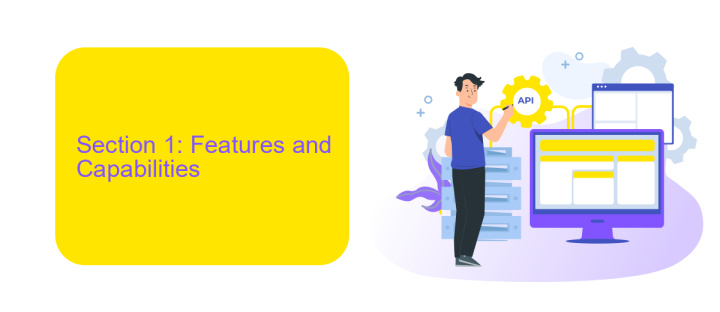Make Vs Pipedream
In the realm of automation tools, Make and Pipedream stand out as powerful platforms designed to streamline workflows and enhance productivity. Both offer unique features and capabilities, catering to different user needs and technical proficiencies. This article delves into a comparative analysis of Make and Pipedream, helping you determine which tool best aligns with your specific automation requirements.
Introduction: Comparing Make and Pipedream
When it comes to automating workflows and integrating various services, two popular tools often come into play: Make and Pipedream. Both platforms offer robust capabilities for connecting apps and automating tasks, but they cater to slightly different needs and user bases.
- Make: Known for its user-friendly interface and extensive library of pre-built integrations.
- Pipedream: Favored by developers for its flexibility and the ability to write custom code.
- ApiX-Drive: Another notable tool that simplifies integration setup with a wide range of services.
Choosing between Make and Pipedream often depends on your specific requirements and technical expertise. Make is ideal for users who prefer a more visual approach, while Pipedream is perfect for those who need advanced customization. Additionally, tools like ApiX-Drive can complement either platform by providing additional integration options and ease of use.
Section 1: Features and Capabilities

Make offers a robust set of features designed to streamline workflow automation. With its intuitive drag-and-drop interface, users can easily create complex workflows without needing extensive coding knowledge. The platform supports a wide range of integrations, allowing seamless connectivity between various applications and services. Additionally, Make provides real-time monitoring and analytics, enabling users to track the performance and efficiency of their workflows.
Pipedream, on the other hand, focuses on providing a highly customizable environment for developers. It supports a vast array of integrations and offers a flexible scripting environment, allowing users to write custom code for more tailored solutions. Pipedream's event-driven architecture ensures that workflows are executed efficiently and in real-time. For those looking to simplify the integration process further, services like ApiX-Drive can be invaluable, offering pre-built connectors and an easy-to-use interface to manage API integrations effortlessly.
Section 2: Use Cases and Integrations

When comparing Make and Pipedream, it's essential to understand their use cases and integration capabilities. Both platforms are designed to automate workflows, but they cater to different needs and user bases.
- Make: Ideal for businesses looking for a user-friendly interface to set up complex workflows without coding. It integrates well with popular apps like Google Sheets, Slack, and Trello.
- Pipedream: Best suited for developers who need a more flexible and powerful tool. It supports custom code and integrates with a wide range of APIs, including GitHub, AWS, and Twilio.
- ApiX-Drive: A versatile tool that simplifies the integration process for both technical and non-technical users. It supports numerous services such as CRM systems, email marketing platforms, and social media tools.
Each platform offers unique benefits depending on the user's expertise and requirements. Make is perfect for those who prefer a no-code solution, while Pipedream caters to developers needing advanced customization. ApiX-Drive bridges the gap by providing an easy-to-use interface with robust integration capabilities, making it a valuable addition to any automation toolkit.
Section 3: Deployment and Scalability

When it comes to deployment and scalability, both Make and Pipedream offer robust solutions tailored to different needs. Make provides a user-friendly interface that simplifies the deployment process, allowing users to set up their automation workflows with minimal effort. Its scalability is evident in its ability to handle a large number of tasks simultaneously, making it suitable for growing businesses.
Pipedream, on the other hand, excels in providing a developer-centric platform that offers extensive customization options. Its deployment process is streamlined through powerful APIs and integrations, enabling developers to create complex workflows effortlessly. Pipedream's scalability is enhanced by its serverless architecture, which automatically adjusts resources based on demand.
- Make: User-friendly interface, easy deployment, scalable for multiple tasks
- Pipedream: Developer-centric, extensive customization, serverless scalability
For businesses looking to integrate various services seamlessly, ApiX-Drive can be a valuable addition. It offers a wide range of integrations that can be easily deployed and scaled according to business needs. Whether you choose Make or Pipedream, leveraging ApiX-Drive can enhance your deployment and scalability efforts, ensuring efficient and reliable automation workflows.
Section 4: Pricing and Support
When it comes to pricing, Make offers a tiered subscription model, which includes a free tier with limited features and several paid plans that scale based on the number of operations and premium features required. Pipedream, on the other hand, also provides a free tier with basic functionalities, but its pricing structure is more flexible, allowing users to pay based on the number of invocations and the resources consumed. This pay-as-you-go model can be advantageous for startups and small businesses with fluctuating needs.
In terms of support, both Make and Pipedream offer extensive documentation and community forums where users can find solutions to common issues. Make provides email support and a dedicated customer success team for higher-tier plans, ensuring that businesses receive the help they need promptly. Pipedream, while also offering robust documentation and community support, includes real-time chat support for all users, making it easier to get immediate assistance. For those looking to streamline their integration processes even further, services like ApiX-Drive can be invaluable, offering tailored solutions and support to optimize workflow automation.


FAQ
What are the main differences between Make and Pipedream?
Which platform is easier to use for non-developers?
Can I integrate third-party applications with both platforms?
What are the customization capabilities of Make and Pipedream?
Is there an alternative to Make and Pipedream that offers a balance between ease of use and customization?
Routine tasks take a lot of time from employees? Do they burn out, do not have enough working day for the main duties and important things? Do you understand that the only way out of this situation in modern realities is automation? Try Apix-Drive for free and make sure that the online connector in 5 minutes of setting up integration will remove a significant part of the routine from your life and free up time for you and your employees.

